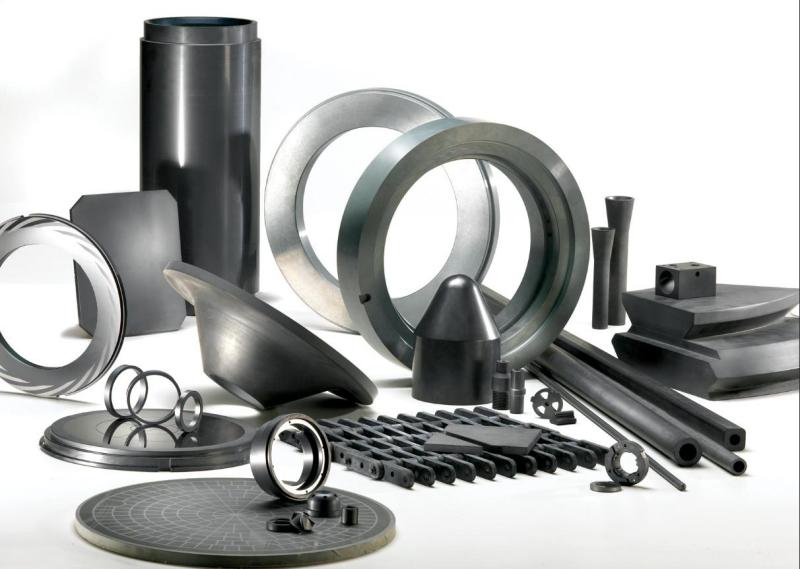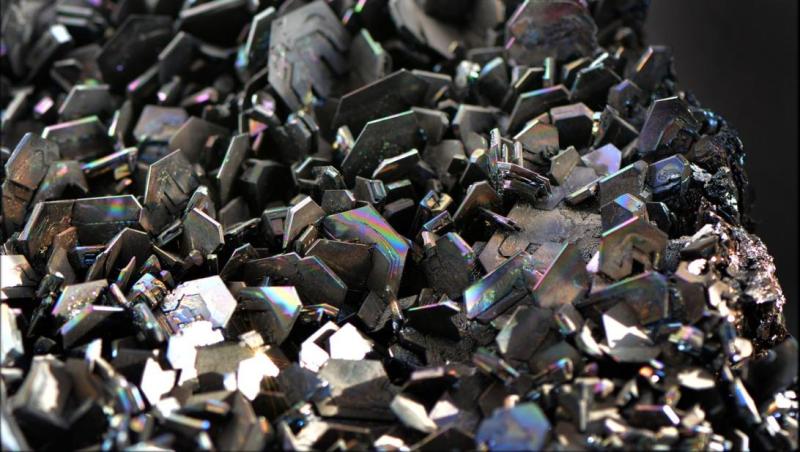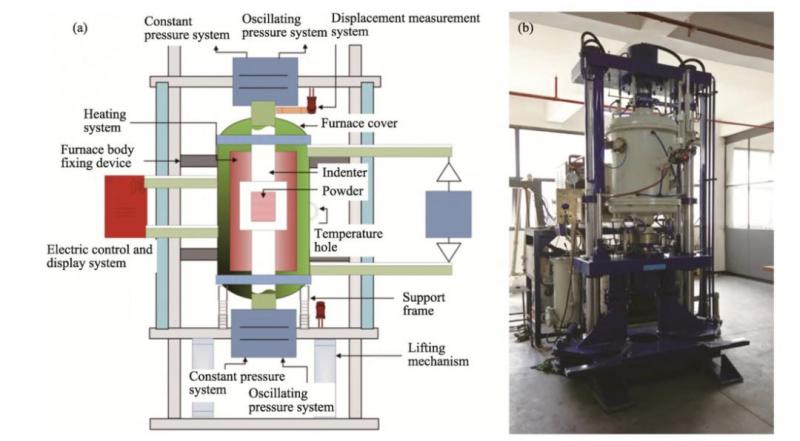
Engineering Ceramic Co.,( EC © ™) Report:
As an important structural ceramic material, silicon carbide, with its excellent high-temperature mechanical strength, high hardness, high modulus of elasticity, high wear resistance, high thermal conductivity, and corrosion resistance properties, is not only used in high-temperature kilns, combustion nozzles, heat exchangers, sealing rings, sliding bearings, and other traditional industrial fields but also as a ballistic armor materials, space mirrors, semiconductor wafers in the preparation of the fixture material and the nuclear fuel casing materials. Engineering Ceramic Co., ( EC © ™ ), has drawn the most common sintering techniques for the Chinese silicon carbide ceramics market from more than two decades of production experience, there are:
◇Reaction sintering
◇Pressure sintering
◇Recrystallized sintering
◇Hot pressure sintering
◇Hot isostatic pressure sintering
◇Vibratory pressure sintering

Reaction Sintering
The process of reaction sintering silicon carbide involves mixing carbon, silicon and sic powders, made by slip casting, pressing or cold isostatic pressing, and then carrying out the silicon penetration reaction, i.e., heating the body to above 1500°C in a vacuum kiln or inert gas kiln, whereby the solid silicon is melted into liquid silicon, which penetrates into the porous body by capillary action. The chemical reaction between liquid silicon or silicon vapour and the β-SiC generated in situ combines with the original SiC particles in the billet to form reaction sintering silicon carbide ceramic materials.
The advantages of reaction sintered silicon carbide are low sintering temperature, low production cost, higher degree of material densification, in particular, the reaction sintering process almost does not produce volume shrinkage, especially suitable for the preparation of large-size and complex shape structural parts. High-temperature kiln materials, radiation tubes, heat exchangers, desulfurisation nozzles, etc. are typical applications of reaction-sintered silicon carbide ceramics.

Pressure Sintering
Atmospheric pressure sintering of silicon carbide is the densification and sintering of samples of different shapes and sizes without external pressure, i.e., usually at a pressure of 1.01×105 Pa and in an inert atmosphere, by adding suitable sintering additives at a temperature of 2000-2150°C. The sintering process can be divided into solid-phase sintering and liquid-phase sintering. Atmospheric pressure sintering of silicon carbide can be divided into two processes: solid-phase sintering and liquid-phase sintering.
Atmospheric pressure sintering is advantageous because of the lower production cost, there is no limitation on the shape and size of the product, especially the solid-phase sintered SiC ceramics that have high densification, uniform microstructure, and excellent comprehensive material properties. Industrial applications are widely used in wear-resistant and corrosion-resistant sealing rings, plain bearings and bulletproof armor, optical mirrors, and semiconductor wafer fixtures.

Recrystallized Sintering
Recrystallized Silicon Carbide is made by slip casting , sintering at 2450 ℃ then we get an excellent performance of recrystallized sic ceramic materials, Re-SiC ceramic materials are different grits and powder graded at a certain ratio and moulded into billet, the fine grits in the billet can be distributed uniformly in the pore space between the coarse grits, and then at a high temperature of more than 2100 ℃ and a certain amount of flow rate of the protective atmosphere, the SiC fine powder gradually evaporate and precipitate at the contact point of the coarse grits until the fine materials disappear completely. Then at a high temperature above 2100℃ and under a certain flow rate of protective atmosphere, the SiC fine powder gradually evaporates and precipitates at the contact point of the coarse particles until the fine particles disappear completely.
Recrystallized SiC has the following characteristics.
(1) There is almost no volume shrinkage after the sintering process;
(2) The density of recrystallized SiC green body remains unchanged after sintering;
(3) Recrystallized SiC has very clear and clean grain boundaries and is free from glassy phases and impurities;
(4) The sintered recrystallized SiC products contain 10% to 20% residual porosity.
Recrystallized SiC has a pure crystalline phase, free of impurities, and has high porosity, excellent thermal conductivity, thermal shock resistance, making it an ideal candidate for high-temperature kilns, heat exchangers and combustion nozzles.

Hot Press Sintering
Silicon carbide powder is filled into the mould, and a certain pressure is maintained during the heating process to achieve the sintering method of forming and sintering at the same time. Hot press sintering is characterised by simultaneous heating and pressing, and the sintering of silicon carbide is achieved under the control of suitable pressure-temperature-time process conditions. The disadvantages of the hot press sintering method are the complexity of the machine and equipment, the high requirements of the mould material, the strict requirements of the production process, which is only suitable for the preparation of simple shaped parts, and the high energy consumption, low production efficiency and high production costs.

Hot isostatic pressure sintering
Hot isostatic pressing is a process that uses an inert high-pressure gas (e.g. argon) to promote densification and sintering of the material, where the silicon carbide powder blank is sealed in a glass or metal container under vacuum. In the hot isostatic process, an initial gas pressure of several MPa is maintained by a compressor while the sample is heated to the sintering temperature. During the heating process, the gas pressure is gradually increased up to 200 MPa, and isostatic gas pressure is used to eliminate internal pores in the material to achieve densification.

Vibratory pressure sintering
Using dynamic pressure during the sintering process can be helpped to break the self-locking and agglomeration when process, to reduce the pore and agglomerates, thus obtaining a homogeneous microstructure with high densities and fine grains, and preparing high-strength and high-reliability structural ceramic materials. Based on this new sintering concept, which was jointly proposed by Engineering Ceramic Co.,( EC © ™) and a research team from Tsinghua University, China, dynamic vibratory pressure was introduced during the sintering of ceramic powders instead of the existing constant static pressure, and this new sintering technology was named vibratory pressure sintering.
The advantages of the product are:
1) Significantly increase the packing density of raw material powder before sintering;
(2) Providing a greater sintering driving force, accelerating the densification of the billet, eliminating the residual tiny pores in the blank, and eliminating the residual porosity within the material, with a porosity of less than 0.1%.



Statement: The article/news/video is from the Internet. Our website reprints for the purpose of sharing. The copyright of the reprinted article/news/video belongs to the original author or the original official account. If there is any infringement involved, please inform us in time, and we will verify and delete it.